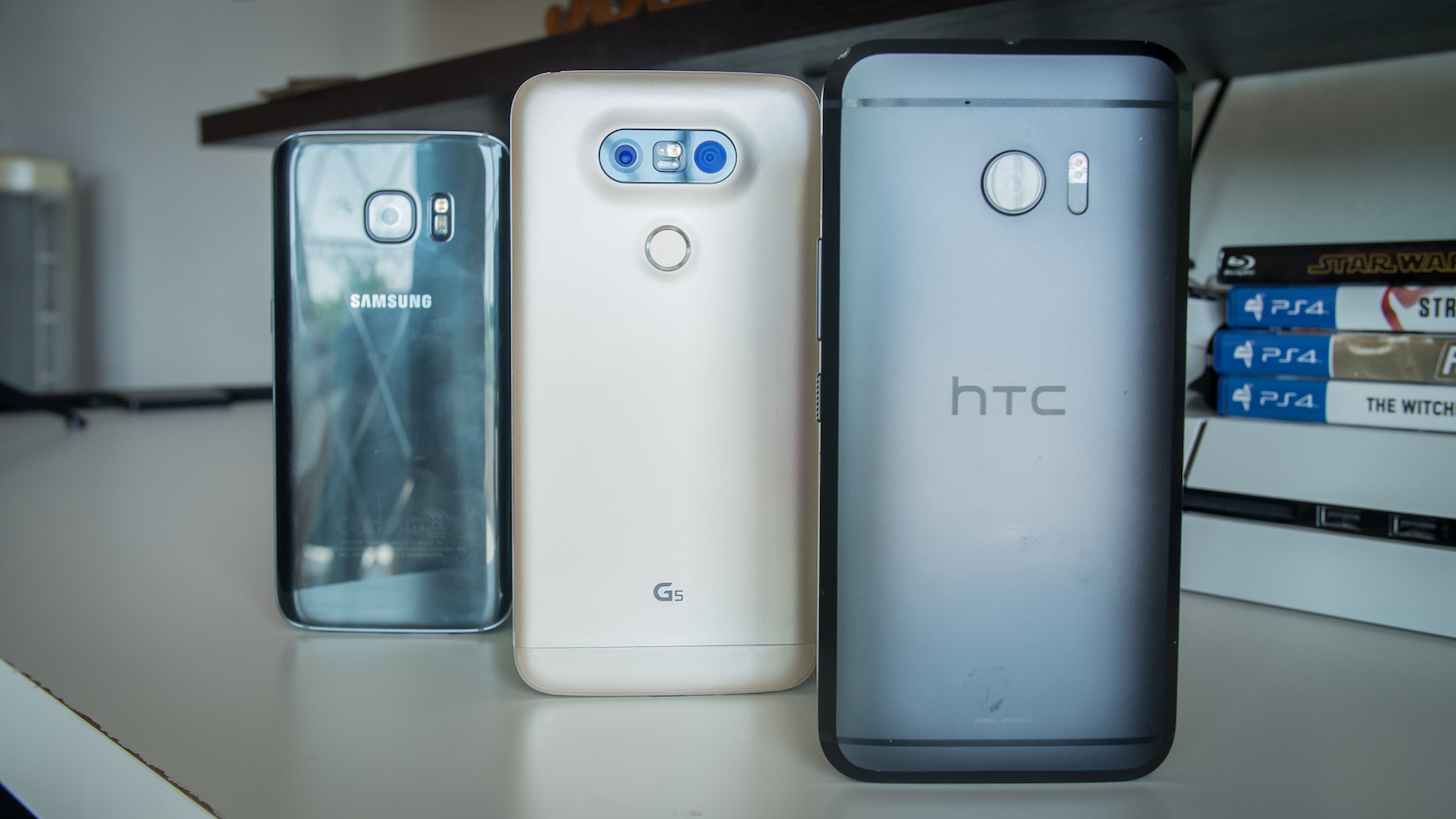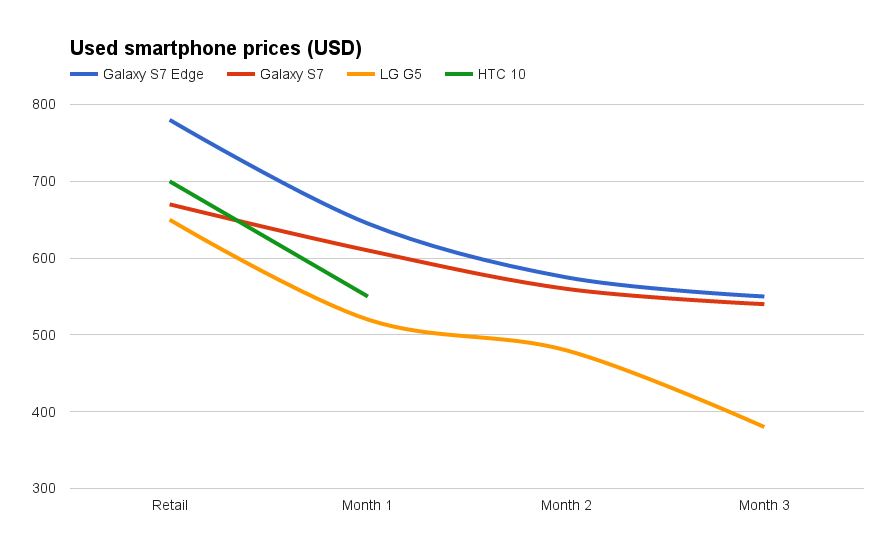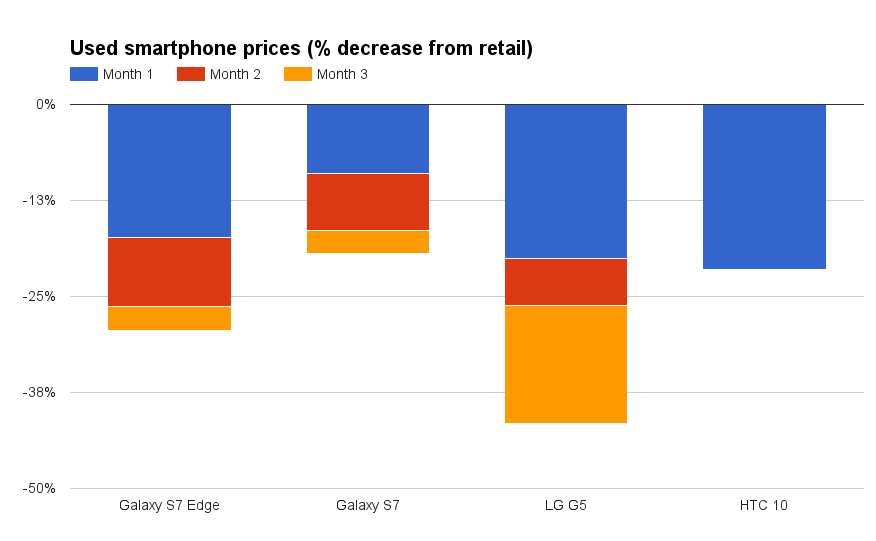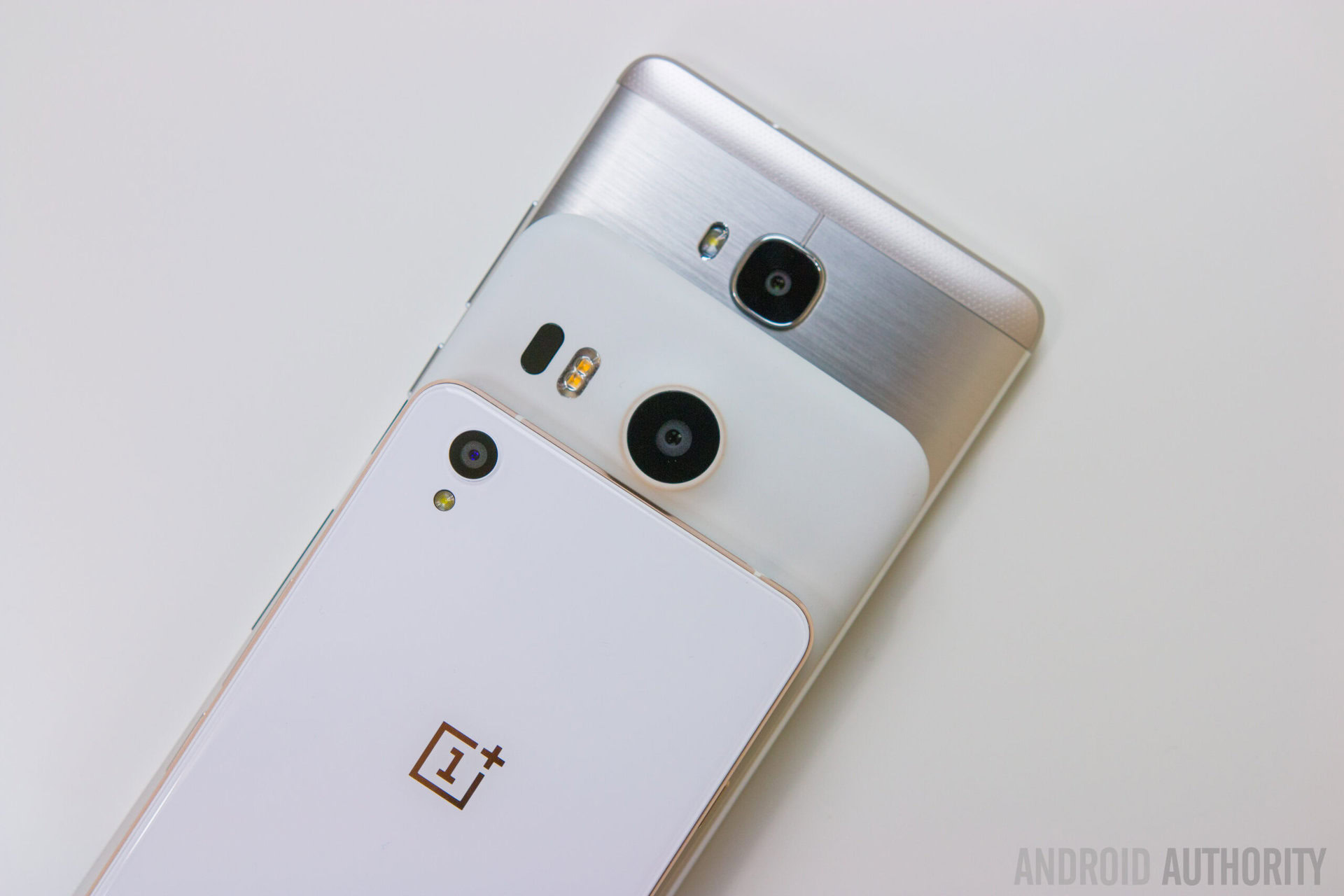Affiliate links on Android Authority may earn us a commission. Learn more.
Which smartphones retain their resale value the best?

The fast pace of mobile technology, a huge range of handsets each year, and the temptation to play with new technology ensures that there’s a healthy market for reselling smartphones. Whether you’re keen to keep up to date with the latest and greatest in smartphone technology, or simply like to update your phone every year, picking up a flagship that can retain much of its retail value could save you some considerable cash when it comes to buying and selling for your next upgrade.
Don’t miss: Here are the 2017 smartphones that retain their resale value the best
Let’s take a look at the second hand prices of some of the latest flagships from some of the industry’s leading smartphone manufacturers, to see which current smartphones and brands you should pick if you’re planning on selling on again later. To start with, we’ll take a look at the flagships released so far in 2016, the big four available in the US being the Samsung Galaxy S7 and S7 Edge, the LG G5, and the HTC 10. The historic price data we’ve used comes from camelcamelcamel.com and applies to the 32GB memory models of each handset unless otherwise stated.

Between the Galaxy S7 and the S7 Edge we can see that the prices have converged gradually after their release, suggesting that consumers who are willing to wait aren’t prepared to pay much extra for Samsung’s curved display technology. The LG G5 has also seen its price take quite a cut in the last month, quite possible due to the announcement of the similarly modular new Moto Z range, even though these phones are not yet on sale in the US. The modular enthusiasts might already be waiting to jump ship to the Moto Z. Typically, it appears that second hand flagship smartphones shave at least $130 off their new launch price within just the first month, and this loss approaches $200 during the third month.
Perhaps a better way to see which smartphones depreciate the quickest is to look at the percentages that these prices have typically fallen by each month after their release.

Given that we don’t have much data for the HTC10, and the new Moto and Sony flagships haven’t gone on sale in the USA yet, we can take a look at some of last year’s flagships to get a rough idea of how well the brands have fared in the past, and to see if today’s flagships match typical second hand pricing trends.
The HTC10’s resale price seems to be falling slightly faster than that of the HTCOne M9 in its first month, which is a worrying sign for a company looking to revitalize its fortunes. This suggests that the HTC10’s price may fall by somewhere between the M9 and the G5 by the time it has been on the market for three months, possibly around 35 percent or $245. We can also spot a general trend for second hand smartphones that are a generation old. Their retail value tends to decline to somewhere between 30 and 35 percent of their original launch price. With this in mind, the LG G5 is already faring particularly poorly, and the HTCOne M9 does not set a promising precedent for the HTC10.
The Samsung Galaxy Note 5, not unlike the Galaxy S7, seems more impervious to depreciation. This may have something to do with the rather unique market that this handset is able to cater for, and that the Galaxy Note series has long been one of the best reviewed lines in the Android smartphone market. However, after the first three months, the handset has seen its price fall by roughly the same 35 percent as most other smartphones from last year.
[related_videos align=”center” type=”custom” videos=”686764,684693,679576,679646″]
Slightly lower cost high-end smartphones, such as the Nexus 6P and the Moto X Force, don’t see their prices fall by quite such a large percentage over the first three months. Although there doesn’t appear to be a solid trend that separates these two tiers of the market in every instance, and again the phones’ resale values fall to around 35 percent of their launch price once a new generation has launched.
The Sony Xperia Z Premium is a particularly interesting case though, as it has seen its second hand price in the US outperform other similarly priced premium smartphones, even from the latest Snapdragon 820 generation. This is likely due to the limited availability of Sony handsets in the US rather than any unique features, such as the 4K display. The BlackBerry Priv, the only flagship to sport a physical keyboard, saw it’s price hold up similarly well for a few months, but can now be found for almost a third of its original asking price. Buying a phone with limited availability is certainly a good strategy for ensuring a strong resale price.
Perhaps one of the most important things to consider when buying and selling smartphones is the mark-up charged for unique features. Samsung’s duel edge display, LG’s modular design, and even the Priv and its keyboard, all allowed the manufacturers to charge an additional premium at launch, but then these prices fall by a larger percentage after a few months on the market when compared with other flagship handsets.
Over the longer term, most handsets tend to see their prices fall by roughly the same percentages, so those looking to upgrade after a year or so don’t have to be so picky about their handsets. That said, flagships from the very well known Samsung and Apple brands remain the best bets for retaining value both in the short and long terms. LG and HTClook to be the much riskier choices, although their second hand prices have already fallen quite far, so they might make tempting purchases for the budget conscious.
If you have any of your own reselling tips and tricks, please do share them with us in the comments section below.
